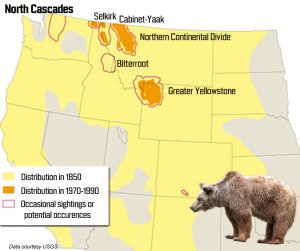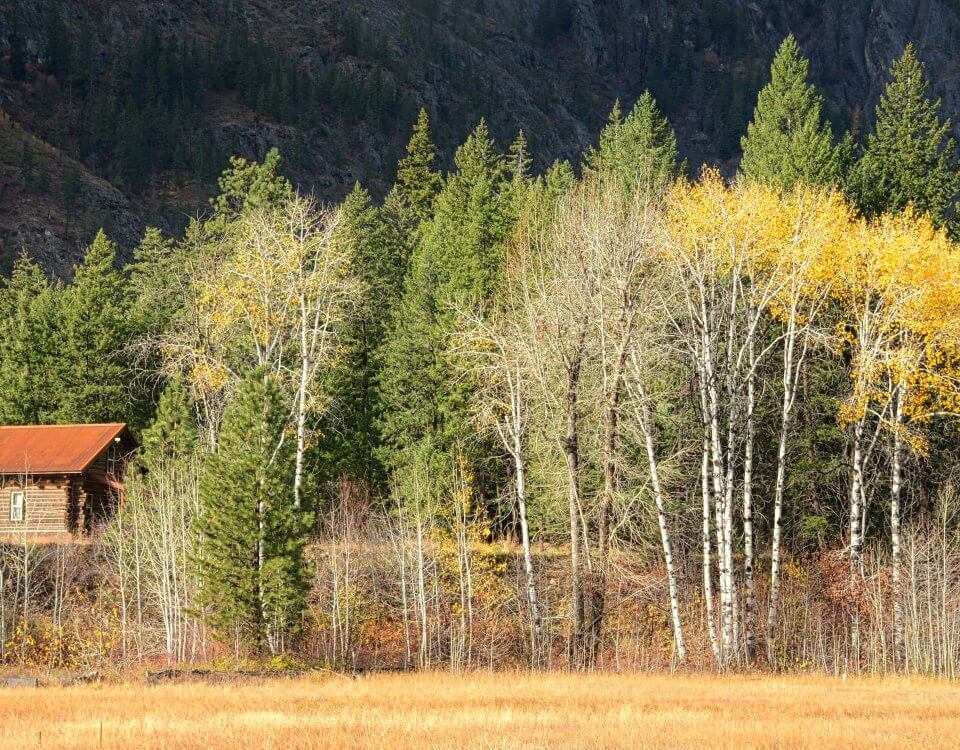Welcoming Back Grizzlies

Upcoming and Ongoing Forest Restoration Projects
December 17, 2022
Mission Project Post-Treatment Monitoring Report
January 19, 2023By Jasmine Minbashian, MVCC Executive Director
This article appeared in our recently published Fall/Winter 2022 Valley Voice print newsletter.
Living in the Methow is not for the faint of heart. This is rugged, mountainous country, with the elements constantly reminding us of the power of the natural world. Our backyard—the North Cascades—is one of the largest and most remote intact wild places left in the lower 48. Consisting of over 9,500 square miles of contiguous wild lands, the North Cascades Ecosystem is anchored by the North Cascades National Park and several large Wilderness areas. We love living here because close connections to nature support our quality of life. But living near this beautiful landscape comes with a responsibility to be good stewards – a responsibility to share these lands with native wildlife of all shapes and sizes – including grizzly bears.
Grizzly bears once roamed throughout the western states from Canada to Mexico. As settlers moved across the country beginning in the mid-19th century, grizzlies were actively shot and trapped and their habitat was severely fragmented. By the mid-20th century, only 700 bears remained south of the Canadian border. The last legally killed grizzly bear in Washington was taken from an area near Washington Pass in 1967 (grizzly bears were listed as endangered species in 1973). Today, the North Cascades is one of the few remaining places suitable for grizzlies. Due to their isolation from other grizzly habitat in British Columbia and a very low reproductive rate, grizzlies will not recover in this ecosystem on their own. They need our help.
The North Cascades contains some of the best habitat for the bears in the lower 48. Grizzlies are opportunistic omnivores who rely mostly on plant foods such as roots and berries (when grizzlies eat meat, it is usually grubs and moths or scavenged dead animals). When biologists were evaluating potential food sources for bears in the North Cascades, they looked at the available research on bear diets and developed a list of 124 plant species they feed on. They found that 100 of the 124 species of plants that are bear foods occur in the North Cascades.
The National Park Service and U.S. Fish and Wildlife Service announced on November 9th that they are relaunching a process to return grizzlies to their native habitat in the North Cascades. Restoration proposals under the proposed plan would be slow and carefully monitored: approximately 3-7 bears per year over 5-10 years, with the initial goal of restoring a population of 25 grizzly bears in the 10,000 square mile grizzly recovery zone (that’s one bear every 400 square miles!). Biologists estimate that it could take up to a century to fully recover grizzly bears to a population of 200 bears in the North Cascades Ecosystem. In contrast, we already live alongside an estimated 25,000 black bears in Washington state.
The agencies are proposing to designate the reintroduced bears as an “experimental population” under section 10(j) of the Endangered Species Act. 10(j) was designed to relieve landowner concerns that reintroductions could restrict use of private, tribal, or public land. This important provision allows the U.S. Fish and Wildlife Service to provide greater management flexibility (e.g., relocation or removal) in the event of human-grizzly bear conflict situations.
The slow, carefully managed restoration that is proposed for the North Cascades has been successful in the Cabinet-Yaak mountains of northwest Montana. In that ecosystem, state and federal bear managers have worked for three decades to re-establish a sustainable grizzly population. Since 1990, 22 bears without any conflict history have been brought in to boost the population.
With support from our elected and community leaders, the National Park Service and U.S. Fish and Wildlife Service, as well as public education and outreach, we are fully capable of coexisting with grizzlies as neighbors. Coexistence occurs on a daily basis in areas like Yellowstone and Glacier National Parks–both with far higher concentrations of grizzlies and humans. Whether you are a hiker, hunter, or farmer, there are simple, effective tools to successfully minimize conflicts between bears and people.
The scoping comment period for grizzly restoration finished on December 14th but there will be another opportunity for comments on the draft Plan/Environmental Impact Statement (EIS) in the spring of 2023. Stay informed of the latest grizzly news at www.mvcitizens.org/wildlife.



